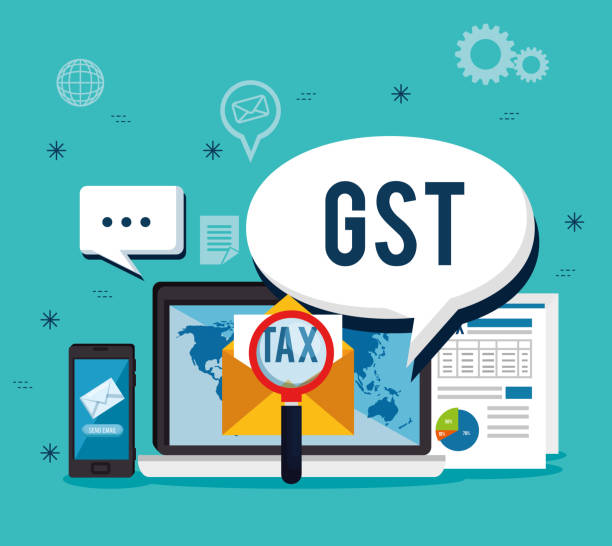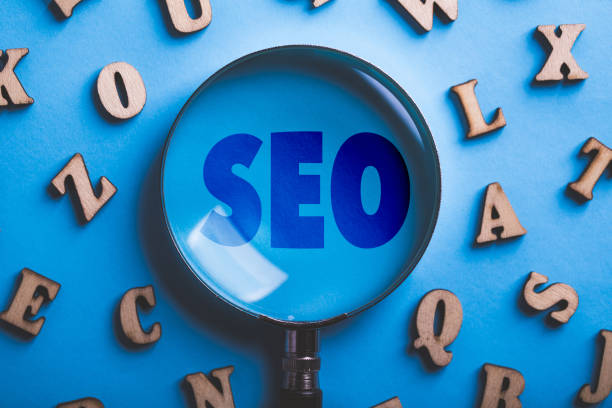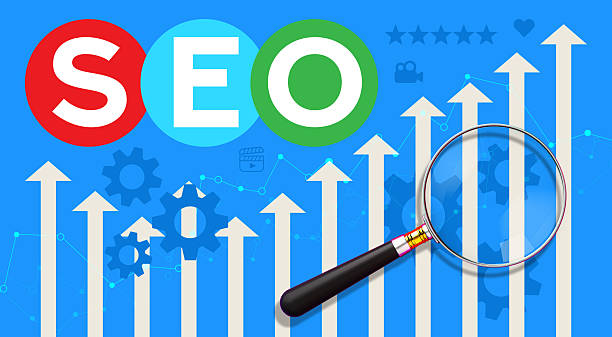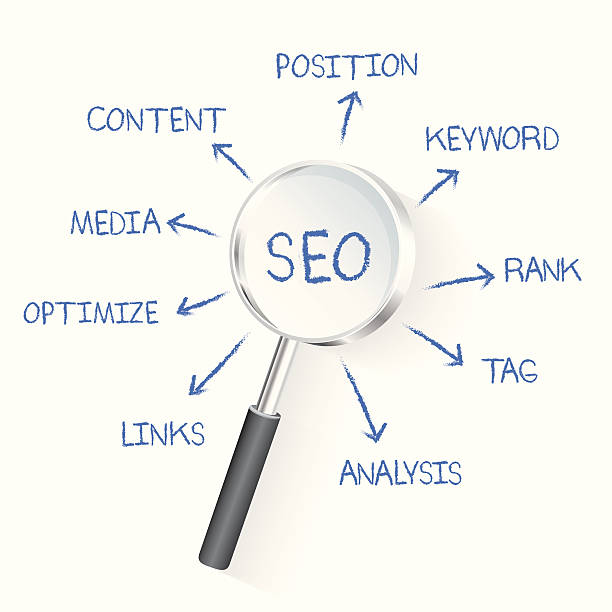Understanding SEO and Its Importance in the Current Era

In today’s highly competitive world, online presence doesn’t just mean having a website; its visibility among billions of web pages is of vital importance.
#SEO or #Search_Engine_Optimization is a set of techniques and strategies that help your website gain a higher ranking in search engine results like Google, ultimately leading to an increase in #organic_traffic and visitors.
This process is more than just knowledge; it’s an educational and continuous art that requires constant updating.
The importance of SEO stems from the fact that most internet users only pay attention to the first page of search results and rarely visit subsequent pages.
Therefore, a top SEO ranking means more visibility, higher credibility, and greater opportunities for sales or interaction.
This provides a comprehensive explanation of why SEO is needed.
Without a strong SEO strategy, even the best content might get lost amidst the vast amount of information on the web.
Therefore, a deep understanding of this field is essential for any business that wants to succeed in the digital space.
Does your company’s website create a professional and lasting first impression in the minds of potential customers? RasaWeb, with its professional corporate website design, not only represents your brand’s credibility but also opens a path for your business growth.
✅ Create a powerful and trustworthy brand image
✅ Attract target customers and increase sales
⚡ Get a free consultation
Main Pillars of SEO: On-Page and Off-Page

To fully understand #SEO, it’s essential to become familiar with its main pillars.
SEO is generally divided into three main categories: #On-Page_SEO, #Off-Page_SEO, and Technical SEO.
Each of these sections plays a complementary role in optimizing your website for search engines.
On-Page SEO refers to all actions you take within your website, such as optimizing titles, meta descriptions, content, images, and URL structure.
This part of SEO is a practical guide for improving user experience and website crawlability by search engine bots.
In contrast, Off-Page SEO refers to activities outside your website, the most important of which is building high-quality backlinks from reputable websites.
These links signal to search engines that your content is valuable and trustworthy.
Technical SEO also deals with the technical aspects of the website, such as loading speed, mobile responsiveness, and the structure of Robots.txt files and Sitemaps.
To achieve the highest SEO results, the coordination and correct implementation of these three pillars are vital.
This provides a complete explanation of the main components of SEO, which is essential for every beginner and even expert.
Keyword Research: The Backbone of SEO

Keyword research is one of the initial and crucial steps in any #SEO strategy and acts as its backbone.
#Keyword_research means identifying and analyzing the #keywords that users employ when searching on search engines.
This process not only helps you produce content relevant to your audience’s needs but also gives you a specialized insight into the target market and competitors.
Keywords can be divided into two main categories: Short-tail keywords and #Long-tail_keywords.
Short-tail keywords usually have high competition and do not precisely specify user intent (e.g., “SEO”).
Whereas long-tail keywords (e.g., “SEO tutorial for small e-commerce websites”) are searched less frequently but indicate user intent much more precisely and have a higher conversion rate.
Various tools are available for keyword research, including Google Keyword Planner, Semrush, Ahrefs, and Moz Keyword Explorer.
Proper use of these tools can help you find keywords with suitable search volume and reasonable competition.
Ultimately, the goal of keyword research is to understand what your audience is looking for and how they search for it, so you can create content that is valuable to users and understandable to search engines.
This is a vital guide for every SEO specialist.
| Keyword Type | Description | Competition Level and Search Volume | User Intent |
|---|---|---|---|
| Short-tail | 1-3 words, general and broad | High competition, high search volume | Unspecified (needs more exploration) |
| Long-tail | 3+ words, specific and detailed | Less competition, lower search volume | Very specific and precise |
| LSI Keywords (Conceptual) | Words related to the main topic, not necessarily synonyms | Varied | Helps search engines understand content depth |
On-Page SEO: Practical Techniques

#On-Page_SEO refers to all actions you can directly perform on your website pages to improve their ranking in search results.
This part of SEO involves optimizing various page elements so that search engines can better understand your content and users can have a better experience.
The most important aspects of On-Page SEO include: optimizing the #Title_Tag and #Meta_Description, which are the first things users see in search results.
Using target keywords in these elements is crucial.
Additionally, the heading structure (H1, H2, H3) in the content should be logical and hierarchical to improve readability and content comprehension.
Content optimization involves the natural use of keywords, producing comprehensive and high-quality content, and answering user questions.
This is an educational guide on how to produce effective content.
Images should also be optimized with appropriate Alt tags and compression for loading speed; this is #image_optimization.
The URL structure should be short, descriptive, and include keywords.
Internal linking between different pages of your website also helps distribute authority and aids search engine crawling.
Ultimately, On-Page SEO not only helps search engines but also improves user experience, which is itself an important ranking factor.
Do you know that a weak corporate website loses many opportunities daily? Solve this problem forever with professional corporate website design by RasaWeb!
✅ Create a powerful and trustworthy image of your brand
✅ Attract targeted new customers and increase sales
⚡ [Get free website design consultation]
Technical SEO: Ensuring Website Health

#Technical_SEO deals with the technical aspects of your website that affect its crawlability and indexability by search engines.
This part of SEO is crucial for ensuring that Google bots can easily access, understand, and ultimately display your content in search results.
One of the most important factors is #site_speed.
Slow websites provide a poor user experience and can lead to an increased bounce rate.
Tools like Google PageSpeed Insights can help you identify and fix speed issues.
#Mobile_compatibility is also an important ranking factor, as a large portion of searches today are conducted via mobile devices.
Your website should have a responsive design to display correctly on any screen size.
Crawlability and #Indexability allow search engines to find your website pages and register them in their database.
This includes correctly configuring robots.txt files and XML sitemaps.
Duplicate content issues, broken links, and incorrect redirects can also harm your ranking.
Regularly checking Google Search Console reports to identify and fix these technical issues is vital.
This is a specialized analysis of the technical aspect of SEO.
Off-Page SEO and Building Powerful Backlinks

#Off-Page_SEO refers to a set of activities performed outside your website that help improve its ranking in search engines.
The most important and influential element in Off-Page SEO is the #Backlink.
Backlinks are links from other websites that point to your website and are considered by search engines as a vote of confidence in your content.
The higher the number and quality of backlinks, the more your domain_authority and website credibility increase with search engines.
#Link_Building strategies should focus on quality, not quantity.
Natural links from relevant and highly reputable websites are far more valuable than artificial or spammy links.
Common techniques include: publishing valuable content that naturally attracts links, writing guest posts on reputable blogs, broken link building, and social media activity to increase content visibility and encourage sharing.
Search engines, especially Google, have complex algorithms for detecting natural and unnatural backlinks.
Therefore, a specialized and ethical approach to link building is crucial to avoid penalties from Google.
This section provides a detailed analysis of the importance of backlinks in the overall SEO strategy.
Producing Valuable and SEO-Optimized Content

Content is king; this phrase holds true in the world of #SEO more than ever.
Producing #valuable_and_SEO-optimized_content is the beating heart of any search engine optimization strategy.
Quality content not only attracts and retains users but also signals to search engines that your website is a reputable and trustworthy source.
Content can come in various forms such as blog articles, videos, infographics, podcasts, and Q&As.
The most important point in #content_production is addressing user needs and questions.
Thought-provoking content can encourage more user interaction and increase engagement rates.
In addition to quality, your content must also be optimized for SEO.
This means naturally and intelligently using target keywords, logical organization with headings, and ensuring its readability and appeal.
The concept of E-E-A-T (Experience, Expertise, Authoritativeness, and Trustworthiness), introduced by Google, emphasizes the importance of content produced by experts and providing reliable information.
Providing entertaining content alongside explanatory content can attract a wider audience.
Given that users are looking for quick and comprehensive answers, your content should be well-organized and address their main questions to improve #user_experience.
| Content Type | Main Features | SEO Benefits | Example |
|---|---|---|---|
| Blog Articles | In-depth, informative, answers questions | Keyword optimization, organic traffic attraction, authority building | “Complete SEO Guide in 2024” |
| Video | Visual, interactive, engaging | Increased dwell time, video SEO on YouTube and Google | “Step-by-Step Backlink Building Tutorial” |
| Infographic | Visual, data-driven, shareable | Backlink attraction, increased brand awareness, social media traffic | “SEO Statistics at a Glance” |
Measuring SEO Success: Tools and Metrics

After implementing #SEO strategies, the most important next step is #measuring_success and monitoring performance.
Without precise data and metrics, you cannot understand how effective your efforts have been and which areas need improvement.
Analytical tools like #Google_Analytics and #Google_Search_Console are essential tools for every SEO specialist.
Google Analytics allows you to track website traffic, user behavior, conversion rates, and visitor sources.
This information provides a deep analysis of your website’s performance.
Google Search Console also provides vital information regarding keyword rankings, indexing status, site errors, and performance in search results.
This tool helps you identify and resolve technical issues affecting SEO.
Key Performance Indicators (#KPIs) in SEO include: keyword rankings, organic traffic, bounce rate, time on site, conversion rate, and number of new backlinks.
Regularly reviewing these metrics helps you make data-driven decisions and optimize your SEO strategy.
Additionally, keeping track of news regarding Google algorithm updates is an important news aspect that can impact your rankings.
Did you know that 94% of users’ first impressions of a business are related to its website design? With professional corporate website design by **RasaWeb**, turn this first impression into an opportunity for growth.
✅ Attract more customers and increase sales
✅ Build credibility and trust in the audience’s eyes⚡ Get a free website design consultation!
The Future of SEO: AI and Voice Search

The world of #SEO is constantly evolving, and its landscape changes with the emergence of new technologies.
#Artificial_Intelligence (AI) and machine learning play an increasing role in search engine algorithms.
Algorithms like Google RankBrain and MUM use AI to better understand user intent and provide more relevant results.
This means that your content should not only be optimized for specific keywords but also address more complex questions and broader concepts to be better understood by search engine AI.
#Voice_search is another important trend in the future of SEO.
With the increasing use of voice assistants like Siri, Alexa, and Google Assistant, how users search has changed.
Voice searches are usually longer and more conversational, so optimizing content for #long-tail_keywords and conversational questions is becoming increasingly important.
Video SEO has also become an important component given the popularity of platforms like YouTube.
Optimizing video titles, descriptions, and tags for search can drive significant traffic to your website.
Following news and new trends in this field is essential to maintain a competitive advantage in SEO.
This is an analysis of the future developments in SEO.
Common SEO Mistakes and Ways to Avoid Them

On the path of #SEO, there are common mistakes that can harm your efforts and even lead to penalties from search engines.
Recognizing these mistakes and being aware of #ways_to_avoid_them is an integral part of any successful #SEO_training.
One of the most common mistakes is Keyword Stuffing; i.e., excessive and unnatural repetition of keywords in content with the aim of misleading search engines.
This not only ruins the user experience but can also lead to a #Google_penalty.
Another mistake is Duplicate Content, which confuses search engines and can lower your ranking.
Ensuring content uniqueness and correct use of canonical tags for similar pages is crucial.
Ignoring #mobile_SEO in the current era is a big mistake that leads to losing a huge portion of the audience.
Slow site speed, lack of quality backlinks, and failure to update content are other #SEO_mistakes.
The main solution is to focus on providing value to users, adhering to ethical SEO principles, and following search engine guidelines.
This is a comprehensive guide to avoiding common SEO errors that lead to improved performance and prevention of #low_traffic.
Frequently Asked Questions
| Question | Answer |
|---|---|
| What is SEO? | SEO, or Search Engine Optimization, is the process of increasing the quality and quantity of website traffic by improving the site’s ranking in natural (organic) search engine results like Google. |
| What are the main types of SEO? | SEO is divided into three main categories: On-Page SEO, Off-Page SEO, and Technical SEO. |
| What does On-Page SEO include? | On-Page SEO includes optimizing elements within the website, such as keywords, page title (Title Tag), meta description (Meta Description), content, URL structure, images, and internal links. |
| What is Off-Page SEO? | Off-Page SEO refers to activities outside the website that help improve its ranking, such as backlink building, social media marketing, and brand mentions. |
| What is Technical SEO? | Technical SEO focuses on optimizing the technical aspects of a website to help search engines crawl and index it better. This includes site speed, mobile-friendliness, site structure, sitemaps, and the Robots.txt file. |
| What role do Keywords play in SEO? | Keywords are phrases that users enter into search engines. Proper and targeted use of relevant keywords in content and site elements helps search engines understand the topic of your page and display it for relevant searches. |
| What is a Backlink and why is it important? | A backlink, or inbound link, is a link from one website to another website. Backlinks act as a “vote of confidence” from other sites for search engines and play a significant role in a site’s credibility and ranking, especially if they come from reputable sites. |
| How does quality content affect SEO? | Quality, relevant, comprehensive, and unique content not only attracts and retains users but also shows search engines that your page is valuable. This helps improve ranking, reduce bounce rate, and increase user dwell time on the site. |
| Why is site loading speed important for SEO? | Site loading speed is an important ranking factor for Google. Faster sites provide a better user experience, have lower bounce rates, and are preferred by search engines. |
| Is SEO a one-time process? | No, SEO is a continuous and long-term process. Search engine algorithms are constantly changing, competition is increasing, and site content also needs updating. Therefore, SEO requires continuous monitoring, analysis, and optimization. |
And other services of RasaWeb Advertising Agency in the field of advertising
Intelligent Data Analysis: A novel service to increase user engagement through Google Ads management.
Intelligent Direct Marketing: A novel service to enhance digital branding through key page optimization.
Intelligent Sales Automation: A novel service to increase click-through rates through marketing automation.
Intelligent Custom Software: A combination of creativity and technology for analyzing customer behavior through key page optimization.
Intelligent UI/UX: A professional solution for increasing website visits with a focus on marketing automation.
And over a hundred other services in the field of internet advertising, advertising consultation, and organizational solutions.
Internet Advertising | Advertising Strategy | Advertorial
Resources
Comprehensive SEO Optimization GuideAdvanced SEO Strategies for Increased TrafficGolden SEO Tips in 2023SEO Principles for Beginners: Step-by-Step
? For your business’s visibility and growth in the digital world, RasaWeb Afarin Digital Marketing Agency is with you. From custom website design to SEO optimization and advertising campaign management, we pave your path to success.
📍 Tehran, Mirdamad Street, next to Central Bank, Southern Kazeroun Alley, Ramin Alley, No. 6


